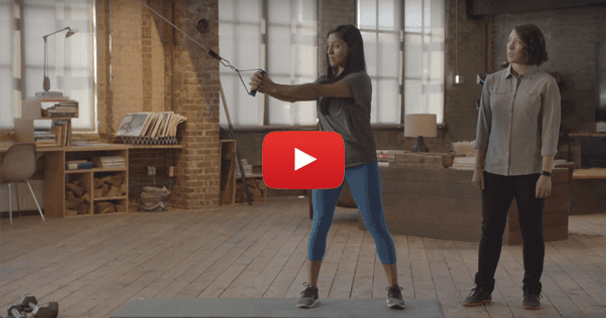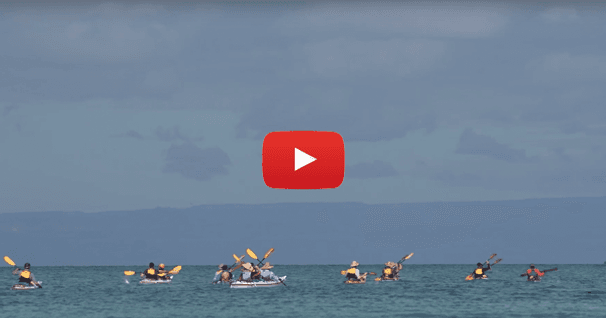Paddling a Flooded Sea Kayak
As an instructor I try to provide experiences that simulate more difficult conditions while still being in a controlled environment. I have found paddling with a flooded kayak a great skill to master for improving your balance and reaction time in your kayak not to mention your bracing skills.
For those who have never paddled a flooded kayak let me explain the dynamics involved. Of course the kayak will be heavier because of the weight of the water. Therefore it will take longer to get it moving. Unlike solid objects you pack in your kayak water will slosh around easily in the boat. The movement of the water will react as you move but not at the same speed. If the water begins to move about in your kayak it will dramatically affect your balance. It is almost like having a mini surf zone in your kayak.
Paddling a flooded kayak is a mostly a matter of balance. Normally you have to react to the forces outside of your kayak. With a flooded kayak you need to react to the external forces and the internal forces. Needless to say you will be relying heavily on braces and supportive strokes. Lets look at a systematic approach I use in my advanced classes.
Be sure you have adequate flotation in your front and rear compartments and you are in calm controlled water when learning this skill.
Before we flood our kayaks there are certain skills we practice first. See the following skills on the USK website: sculling, supportive forward sweep stroke, supportive reverse sweep stroke, extended paddle forward sweep stroke and the low brace moving turn. These above mentioned skills set a nice foundation for you to catch and maintain your balance.
When you are ready, open your spray skirt and flood your cockpit about half full. This is best done near shore or using your partner's kayak for support. For those with a good sculling brace you can edge over and let the water in to the level you want while doing a sculling brace. Keeping your spray skirt attached after the cockpit is flooded is up to you. I like attaching it because it maintains the amount of water for learning consistency.
Once flooded, I like to begin by paddling forward with supportive forward sweep strokes. I want to get the feel of starting from a dead stop. I try to keep upright at first with little if any leaning or edging. I am getting accustomed to the difference in balance just by having water in the cockpit.
Next I want to feel to what degree the moving water in the kayak affects my balance so I will start leaning from side to side while still paddling forward. The supportive sweep stroke is a necessity for this part of the drill. The best way I can describe the sensation is the water action is slower than my leaning action. When I am recovering from the lean the water is still moving to that side. I need to adjust my balance point and my bracing to accommodate the movement of the water inside the kayak. I try to get the water to move as quick as I react but it never does.
When the water gets moving I don't try to fight the movement. I try to find ways to go with it and react to the movement by keeping my torso relaxed. I try to let the kayak move as necessary and search for my balance points. The bracing action of the supportive sweep stoke gives me support if I lose my balance.
As I get accustomed to the moving water I really try to stretch my limits. I will lean as far as my bracing skills allow. I will do this from side to side. Again the goal is to learn how to react to the forces from within the kayak.
If you are asking when am I ever going to be paddling with that much water in my kayak I have your answer. If you find yourself in rough conditions and you perform a paddle float recovery you will have serious water in your kayak. There are times when I have had to paddle to get away from an area before I was able to pump out the water. If you ever try the scramble recovery in rough water then you will be in a kayak with plenty of water in the cockpit and your greatest stability will be when you are moving rather than sitting still.
Rough water on the outside of your kayak will move the water inside your kayak in a more confused manner than you can ever get during this exercise but it is a close simulation.
To get the most realistic effect I have also performed this exercise in reflecting waves in front of a sea wall. Of course I am far enough away from the wall so I am not washed onto the wall. It is a good idea to have a partner around when you practice in these conditions so you have help if you need it.
After you experience the side to side movement you want to experiment with sudden stops and back paddling. Use your supportive reverse sweep stroke for stopping and going backwards. I will first try a slow stop and some easy back paddling.
When I feel comfortable I will try leaning out to each side as I go backwards. I am repeating the above part of the drill but with reverse paddling.
After I feel good about the side to side motion while going forward and backwards I will practice my emergency stop and go drill. I try to accelerate forward from a dead stop as quickly as possible and do a reverse stroke emergency stop. Then I will reverse paddle as quickly as possible and do a forward stroke emergency stop. I repeat the process always trying to get the water in the kayak moving as much as possible. I also like trying emergency turns to see how it affects my balance.
As you would expect I will add more water to my kayak and repeat the process. For those who want even more of a challenge you can partially fill your forward and rear hatches and then your cockpit. It is critical to only partially fill your hatches. Remember the front and rear hatches are your kayak's floatation. Be sure you have the hatch covers secure after you put water in the compartments. This should only be done in controlled calm water near shore. Your goal is to learn how to deal with an unstable kayak not to lose your kayak.
After doing moving drills I practice my stationary bracing skills and even my rolling with water in the kayak. I figure if I can perform my normal skills with a less stable kayak it will be easier for me when the kayak is empty.
After playing with numerous variations of this skill I decided to teach all day with my cockpit half filled with water. The class was a staff training class focusing on advanced skills. I had to really focus on balance control while performing numerous strokes and capsize recovery techniques. If you want even more balance practice combine the swimmer assists with the flooded kayak exercise.
You never know when you may end up in a situation where you cannot get the water out of your kayak due to the conditions or the loss of a pump. Knowing how to react to a flooded kayak before you actually are in the real situation is a good insurance policy. In addition you will see an improvement in your bracing skills and balance.
Permission to use this article must be obtained from Wayne Horodowich at the University of Sea Kayaking (study@useakayak.org).
Wayne Horodowich, founder of The University of Sea Kayaking (USK), writes monthly articles for the USK web site. In addition, Wayne has produced the popular "In Depth" Instructional Video Series for Sea Kayaking.
Related Articles
During this video we'll do a quick demo of 8 exercises and lay out a basic training plan for you to…
When a situation occurs while paddling in a group, conditions don't stop. Learn some pointers on how to…
Whenever you're paddling, there's safety in numbers and so it's generally not a good idea to paddle…
Unfortunately, too often, I hear of paddlers with sore shoulders or those recovering from shoulder…



